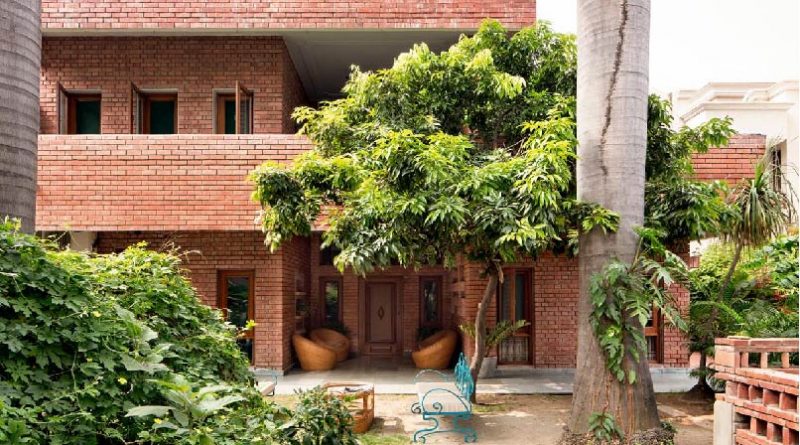Inside the Chandigarh home of architect Noor Dasmesh Singh
Brass detailing, Indian Kota stone, eclectic furniture and personal objects make up the vibrant palette of this earthy-toned home in India
Architects’ houses have long been a topic of intrigue, and architect Noor Dasmesh Singh’s house on the periphery of the modernist urban plan of Chandigarh is no different. The founder and principal of NOOR Architects Consultants has created a personal haven tailored to his lifestyle, his zeal for crafted details, and the furniture he has collected over his lifetime.
Dasmesh Singh bought the utilitarian row house, dating back to the 1980s and built of wire cut exposed bricks in 2017 and the project has been a labour of love ever since. Yet however utilitarian in form, the architect has brought a warm richness to his restoration, which is layered with new materials, custom detailing and his own designs.

Despite its sensible appearance, maintaining the original architectural form was in fact integral to his plan – all of the exterior openings were preserved to maintain the gratifying exposed brickwork jamb of the house.
Subtle edits were made to the interior plan to adapt it to Dasmesh Singh’s way of life. A studio space on the first floor, a meeting space for discussions on the ground floor and a long and thick outdoor table make of south Indian granite slab were each designed with Dasmesh Singh’s working habits in mind.
The removal of a few inner walls, allowed the space to become more open plan. There is a sense of flow from entrance hall, to living room then dining room flow, and subtle interior additions such as a fluted glass and metal screen, or a moon pendant hung between the ceiling vaults, work to delineate the space.
The architect’s aesthetic for the house was formed through a ‘a confluence of styles, personal impressions and influences,’ he explains. While his material palette combines refined hints of ‘vernacular’ held together loosely within an ‘overall modernist framework’.
Abstraction meets traditional Indian design in the entrance hall where a blown glass light installation hangs above a geometric grey-green Indian Kota stone floor, combined with white marble and Jaisalmer yellow stone. Elsewhere hand-crafted bone inlay furniture inspired by Punjabi interiors, Sikh miniatures and white marble Makarana lamps are combined with iconic furniture pieces such as the Anacleto Spazzapan chair, a Nagashima console against a Corten back panel and restored art deco chairs.
An earthy-coloured layering of materials acts as a backdrop to all of these accents, including Burma teak, Corten, exposed brick, fishbone wooden floors and dusk-grey walls. These softly-toned surfaces allow Damesh Sinh’s custom-designed details, such as the handcrafted ironmongery, solid wooden knobs, and the fine brass mesh drape, to become highlights of the house.



Source: wallpaper.com










